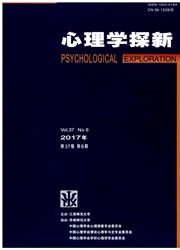

 中文摘要:
中文摘要:
该研究采用ECM实验范式,操纵记忆加工策略验证联想网络模型或情绪渗透模型。电影片段诱发被试高兴或悲伤的情绪状态后,被试在有意识记和无意识记加工策略下学习情绪词,然后进行自由回忆。结果:情绪电影片段成功诱发被试高兴或悲伤情绪;被试在采用无意识记和有意识记加工策略学习情绪词时均出现ECM,无意识记加工策略下效应量的大小显著高于有意识记加工策略下效应量的大小,实验结果支持情绪渗透模型。
 英文摘要:
英文摘要:
The emotion congruent memory paradigm was used in the experiment. All of the participants studied some emotional content words by using incidental memorizing and intentional memorizing processing strategies. In the end, the participants were required to write down the emotional content words that they have learnt previously as many as they could. The finding suggested that sad film editing could induct sad emotion state and happy film editing could induct happy emotion state for the participants. Moreover,there were emotion congruent memory in both incidental memorizing and intentional memorizing processing strategies. More importantly, the size of memory biases when happy or sad participants used incidental memorizing processing strategy was significant higher than that of memory biases when they used intentional memorizing processing strategy, and the affect infusion model may explain our results. Finally, memorizing processing strategies can influence the emotion congruent memory.
 同期刊论文项目
同期刊论文项目
 同项目期刊论文
同项目期刊论文
 期刊信息
期刊信息
